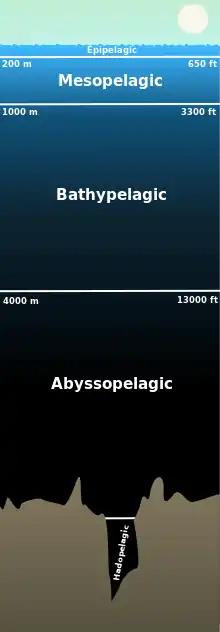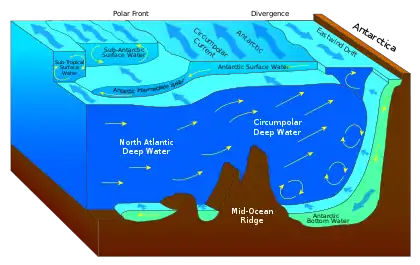Water column
The (oceanic) water column is a concept used in oceanography to describe the physical (temperature, salinity, light penetration) and chemical (pH, dissolved oxygen, nutrient salts) characteristics of seawater at different depths for a defined geographical point. Generally, vertical profiles are made of temperature, salinity, chemical parameters at a defined point along the water column.[1] The water column is the largest, yet one of the most under-explored, habitats on the planet; it is explored to better understand the ocean as a whole, including the huge biomass that lives there and its importance to the global carbon and other biogeochemical cycles.[2] Studying the water column also provides understanding on the links between living organisms and environmental parameters, large-scale water circulation and the transfer of matter between water masses.[1]

Water columns are used chiefly for environmental studies evaluating the stratification or mixing of thermal or chemically stratified layers in a lake, stream or ocean. Some of the common parameters analyzed in the water column are pH, turbidity, temperature, hydrostatic pressure, salinity, total dissolved solids, various pesticides, pathogens and a wide variety of chemicals and biota.
Descriptively, the deep sea water column is divided into five parts—pelagic zones (from Greek πέλαγος (pélagos), 'open sea')—from the surface to below the floor.
The term water column is also commonly used in scuba diving to describe the vertical space through which divers ascend and descend.
See also
References
- "The water column". Geo-Ocean. Retrieved 2023-02-22.
- "Why do we explore the water column?: Exploration Facts: NOAA Office of Ocean Exploration and Research". oceanexplorer.noaa.gov. Retrieved 2023-02-22.



